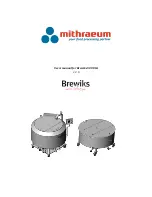
WAGO-I/O-SYSTEM 750 XTR
Fieldbus Communication 155
750-352/040-000 FC ETHERNET G3 XTR
Manual
Version 1.3.0
Use register functions to access analog signals and coil functions to
access binary signals!
It is recommended that analog data be accessed with register functions
and
digital data with coil functions
. If reading or writing access to binary signals is
performed via register functions
, an address shift may occur as soon as further
analog modules are operated on the coupler/controller.
11.2.3 Description of the MODBUS Functions
All MODBUS functions are executed as follows:
1.
A MODBUS TCP master (e.g., a PC) makes a request to the WAGO
fieldbus node using a specific function code based on the desired
operation..
2.
The WAGO fieldbus node receives the datagram and then responds to the
master with the proper data, which is based on the master’s request.
If the WAGO fieldbus node receives an incorrect request, it sends an error
datagram (Exception) to the master.
The exception code contained in the exception has the following meaning:
Pos: 94.9 /Serie 750 (WAGO-I/O-SYST EM)/F unktionsbeschr eibung/Fel dbuskommuni kati on/MOD BUS/Anwendung der M ODBU S-Funkti onen - T abelle "Excepti on-C odes" @ 7\mod_1265624178510_21.docx @ 49943 @ @ 1
Table 70: Exception Codes
Exception code Meaning
0x01
Illegal function
0x02
Illegal data address
0x03
Illegal data value
0x04
Slave device failure
0x05
Acknowledge
0x06
Server busy
0x08
Memory parity error
0x0A
Gateway path unavailable
0x0B
Gateway target device failed to respond
Pos: 94.10 /Serie 750 ( WAGO-I/O-SYST EM)/Funkti onsbeschrei bung/F eldbuskommuni kation/M ODBU S/Anwendung der MOD BUS-F unktionen - FC1 bis FC 6 @ 3\mod_1234957373125_21.docx @ 27556 @ 444444 @ 1
The following chapters describe the datagram architecture of request, response
and exception with examples for each function code.
















































